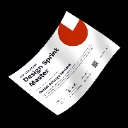Activity
Mon
Wed
Fri
Sun
Jun
Jul
Aug
Sep
Oct
Nov
Dec
Jan
Feb
Mar
Apr
May
What is this?
Less
More
Created by David
A place for startup founders, solopreneurs, and independent professionals to practice essential skills, build their network, and grow their net worth.
Memberships
Contentpreneurs
Private • 632 • $97/m
Contentpreneurship.com (Free)
Public • 5.1k • Free
The Skool Games
Private • 13k • Free
Inner Circle Mentorship
Private • 823 • Free
Facilitator Club
Public • 5.7k • Free
Lifetime Trusted Advisors
Private • 939 • Free
Product Synthesis
Public • 88 • Free
MaxFree
Private • 48.2k • Free
Duality Driven
Private • 683 • Free
1 contribution to Design Sprint Masters
New💡 The VALUE PROPOSITION FIT CYCLE
Introducing a new framework inspired by the Product Market Fit Cycle - Carlos Eduardo Espinal, that focuses on creating customer-centric value propositions for Product Managers or Innovation Managers. Here's a breakdown of our framework: 🏁 Goal/Need: This initial step could be a specific business need, a broader north star goal, or even just an initial idea. 1. Product Hypothesis: Leveraging your understanding of the problem, business context, and past experiences, you develop a solution proposition – the hypothesis of what your product will be. 2. Ideal Target Segment: Here, data and analysis come into play. You refine your target customer segment to a specific group with the highest potential to benefit from your product hypothesis. 3. Problem Framing: This stage involves getting key stakeholders on board. Together, you define the specific problems your target segment faces, prioritize them, and identify the most crucial one your product will address. 4. Define the Value Proposition & Validate with Customers: This is where the Design Sprint happens. You rapidly create a prototype, present it to real users within your ideal target segment, and gather feedback. This stage validates whether your proposed solution (value proposition) actually solves their core problem effectively. 5. Analyze Results: You then assess the feedback from the design sprint. If there's early validation from customers – meaning they find your solution desirable and addresses their needs – you can move forward. ↗ Create Business Case: With positive validation, you can build a business case that justifies the resources needed to bring your product to market. ↘ Go Back & Iterate: With no customer validation, you'll investigate more about the root cause of the problem. Was you hypothesis wrong? Was your target customer segment wrong? or Both?
5
2
New comment Mar 29

1-1 of 1
@david-rovira
Hi! Here to connect with other creative professionals, and practice our skills together!
Active 12h ago
Joined Sep 22, 2023
Boca Raton, Florida, USA
powered by



